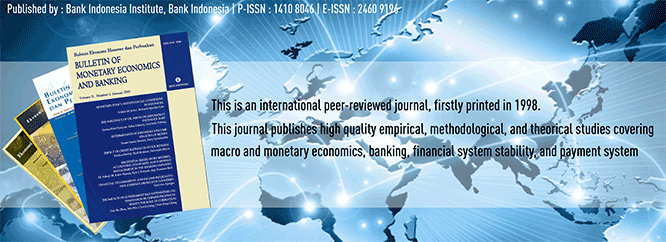
Document Type
Article
Abstract
Non-cash payments have been increasing significantly, followed by its substitution and efficiency effects. Cash payment is substituted, inducing decrease of cash holding by economic agents, while on the other hand more money enters the banking system. The increase of non-cash payments also cuts transaction costs, and the economy runs more efficiently.Using Structural Cointegrating VAR, its impacts on the economy are investigated. The result shows that cash holding decrease, while money stock M1 and M2 increase. The increase of non-cash payments also induces GDP growth and slight price decrease. Its implication to monetary policy is also analyzed, showing decrease of BI rate and monetary policy cost.JEL Classification: E41, E51, E58Keywords: non-cash, payment system, money demand
Recommended Citation
Syarifuddin, Ferry; Hidayat, Ahmad; and Tarsidin, Tarsidin
(2009)
"DAMPAK PENINGKATAN PEMBAYARAN NON-TUNAI TERHADAP PEREKONOMIAN DAN IMPLIKASINYA TERHADAP PENGENDALIAN MONETER DI INDONESIA,"
Bulletin of Monetary Economics and Banking: Vol. 11:
No.
4, Article 2.
DOI: https://doi.org/10.21098/bemp.v11i4.346
Available at:
https://bulletin.bmeb-bi.org/bmeb/vol11/iss4/2
First Page
369
Last Page
402
Creative Commons License

This work is licensed under a Creative Commons Attribution-NonCommercial 4.0 International License
Country
Indonesia
Affiliation
Bank Indonesia







